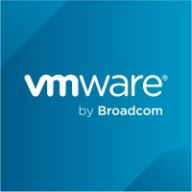

VMware Cloud Director and Red Hat CloudForms are leading contenders in the cloud management platform category. VMware Cloud Director often appears to have an edge in support and pricing efficiency, while Red Hat CloudForms is praised for its robust feature set and flexibility.
Features: VMware Cloud Director offers robust multi-tenancy, scalability, and seamless integration with VMware products, enhancing its self-service capabilities for customers. It provides comprehensive cloud services and operational tools, benefiting large enterprises. Red Hat CloudForms impresses with its integration abilities across multiple infrastructures, dynamic catalogs, and extensive configuration options, offering flexibility and adaptability.
Room for Improvement: VMware Cloud Director needs better integration with hyperscalers like AWS or Azure and improved automation and API support. Users also seek enhanced native monitoring capabilities and expanded integration with network devices. Red Hat CloudForms requires improvements in stability, customization capabilities, and update management. It also has complex integration requirements and lacks out-of-the-box functionality, with users desiring better multi-cloud support and more predefined modules for easier implementation.
Ease of Deployment and Customer Service: VMware Cloud Director, while having a sophisticated installation process, excels in hybrid and private cloud deployments, with responsive customer service and extensive documentation. Red Hat CloudForms offers cloud environment flexibility but is criticized for its complexity and programming skill requirements during deployment. Customer support receives mixed reviews; some users praise it while others highlight the need for improved responsiveness and problem resolution.
Pricing and ROI: VMware Cloud Director is perceived as expensive with significant licensing costs impacting ROI, though efficient provisioning can offer a good return if managed well. Despite high costs, many find VMware's pricing uncompetitive, especially with budget constraints. Red Hat CloudForms also comes with a high price but is considered cost-effective due to its subscription-based model. Both are seen as costly, but Red Hat’s pricing is often viewed as more justifiable given its offerings.
| Product | Market Share (%) |
|---|---|
| VMware Cloud Director | 5.4% |
| Red Hat CloudForms | 1.5% |
| Other | 93.1% |


| Company Size | Count |
|---|---|
| Small Business | 4 |
| Large Enterprise | 7 |
| Company Size | Count |
|---|---|
| Small Business | 24 |
| Midsize Enterprise | 11 |
| Large Enterprise | 36 |
Manage container, virtual, private, and public cloud infrastructures
Managing a complex, hybrid IT environment can require multiple management tools, redundant policy implementations, and extra staff to handle the operations. Red Hat® CloudForms simplifies IT, providing unified management and operations in a hybrid environment.
As your IT infrastructure progresses from traditional virtualization toward an Infrastructure-as-a-Service (IaaS) model, CloudForms evolves, protecting your investments and providing consistent user experience and functionality.
VMware Cloud Director, also known as vCloud Director, is a cloud management tool that offers secure, flexible, and efficient cloud resources to thousands of enterprises and IT teams across the world. The solution serves as one of the leading cloud service-delivery platforms for businesses that want to manage and operate their services effectively. By deploying this solution, companies can benefit from virtualized networking, computing, security, and storage. These benefits can be received in a timely manner, as the infrastructure of the product is operationally ready within minutes and clients do not need to install and configure physical infrastructure.
One of the biggest advantages of vCloud Director is that it allows users to build cloud-ready applications. In several ways, it facilitates the process for developers, including:
vCloud Director Features
This VMware product has various features through which users can virtualize their data and benefit from quality management solutions. Among the popular capabilities of vCloud Director are:
vCloud Director Benefits
VMware vCloud Director offers various benefits to its users. Some of these include:
Reviews from Real Users
Ajit Y., a cloud architect at a computer software company, likes VMware vCloud Director because it is a stable, truly multitenant software and the go-to tool for infrastructure as a service.
Kashif F., a divisional engineer at National Telecom Corporatio, rates vCloud Director highly because the product can be used for infrastructure provisioning without using a platform service.
We monitor all Cloud Management reviews to prevent fraudulent reviews and keep review quality high. We do not post reviews by company employees or direct competitors. We validate each review for authenticity via cross-reference with LinkedIn, and personal follow-up with the reviewer when necessary.